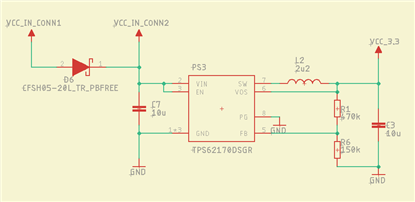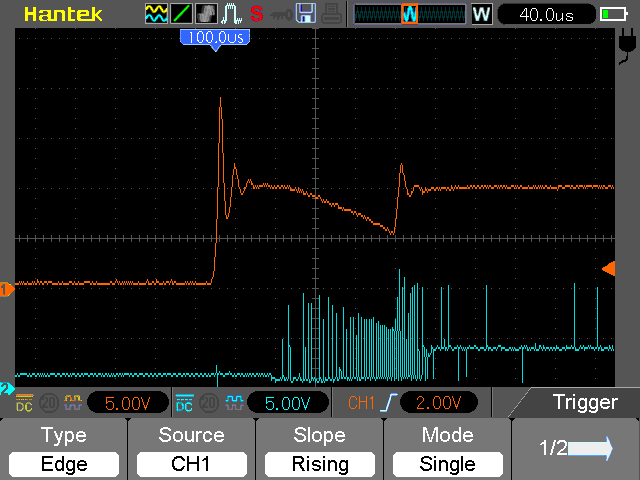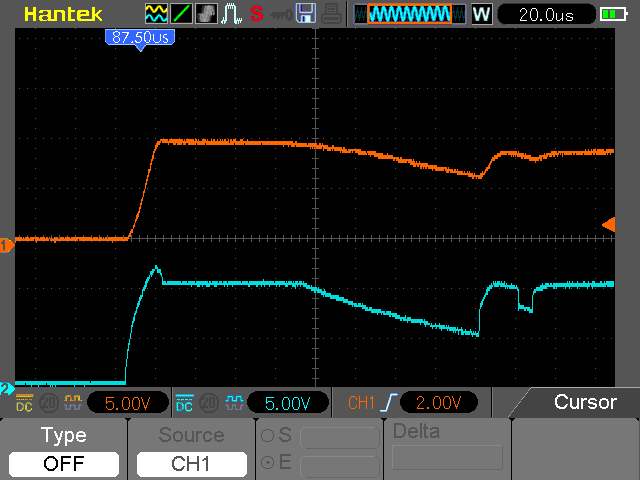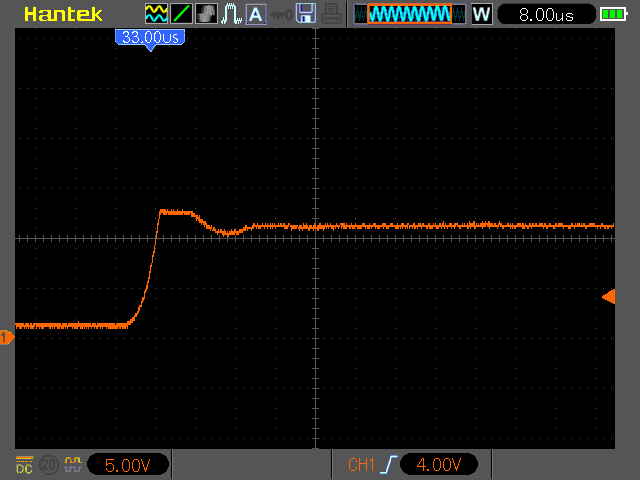Hi,
we are implementing the TPS62170 DC-DC converter in our solution which is meant to be battery-powered with an input voltage of up to 16.8V maximum (4S batteries).
We are experiencing an issue where in a significant amount of cases (double-digit percentages) the TPS62170 gets violently damaged in <1s after connecting the VIN. In some cases there is an audible pop and a small amount of magic smoke, in other cases, the TPS62170 has caught fire. At lower voltages (~5V VIN) the device operates just fine.
The components we have selected are as follows:
C7 CAP(VIN) PN: CL10A106MA8NRNC (0603, 10uF, 25V)
L2 IND(SW) PN: MBKK1608T2R2M (0603, 2.2uH, Isat 0.52A)
C3 CAP(VOUT) PN: CL10A106MA8NRNC (0603, 10uF, 25V)
The output is regulated at ~3.3V with 470k and 150k resistors.
Schematic:
Note: The device has 2 connectors and the D6 diode separates the power rails so the connector2 cannot put voltage to the battery connected to connector1
Board layout:
Note: We are using copper-capped vias so there are no physical holes through the PCB.
VIN copper traces on top and bottom layers:


I've read similar topics I found here on the TI forum and I assume we have an issue with VIN stability due to the combination of the CAP(VIN) and the inductance caused by the PCB traces, the connector, and the battery wires. Can you please provide your insight into this assumption? But more importantly, do you have any suggestions for us on how to prevent this issue? We are actively investigating the issue on our end, however, any guidance you could offer on what aspects we should focus on and what specific measurements we should take would be immensely helpful.
Thank you for your assistance in helping us resolve this issue.
Best regards,
Michal Sebesta






